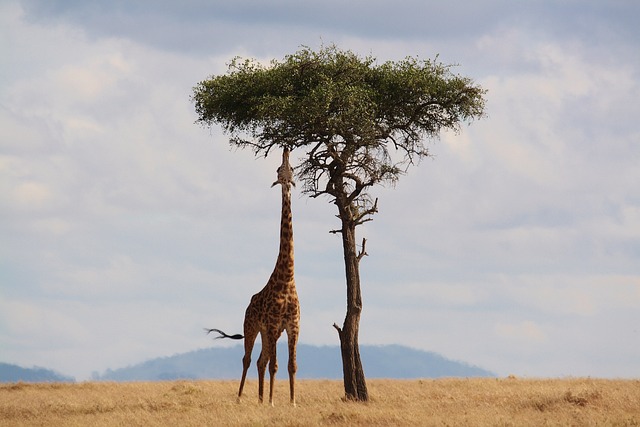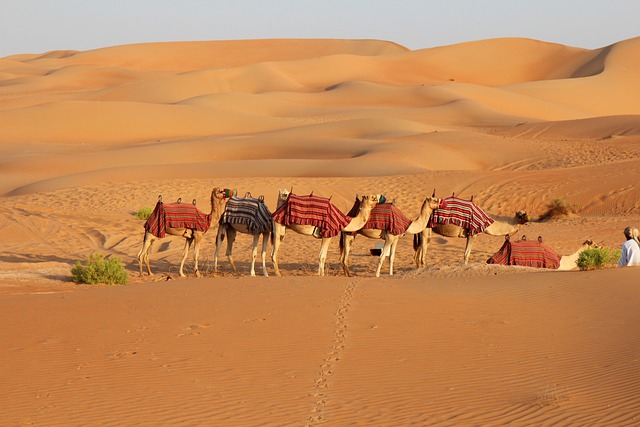The Global Desert Safari isn't just about breathtaking landscapes; it's also a sensory journey through Arabian cuisine, deeply rooted in historical and cultural traditions. This cuisine, rich in unique spices and flavors, reflects the harsh yet beautiful desert landscapes. From iconic dishes like couscous to sweet treats with dates and honey, every bite tells a story of resilience and creativity. Modern chefs blend traditional recipes with innovative techniques, ensuring Arabia's culinary heritage thrives for unique dining experiences on global desert safaris.
“Embark on a culinary adventure as we uncover the sweet enchantments of traditional Arabian cuisine deserts. From the vast sand seas to starry nights, this isn’t just a safari—it’s a sensory experience. Our journey delves into the rich historical roots and iconic ingredients that define these treats. Explore how modern chefs are reimagining age-old recipes while preserving the essence of Arabia’s desert heritage. Discover more than just sand and stars; savor the global desert safari’s sweetest secrets.”
- Unveiling the Delights: A Journey Through Arabian Desert Cuisine
- Global Desert Safari: More Than Just Sand and Stars
- Historical Roots of Arabian Desert Desserts
- Iconic Ingredients and Their Unique Flavors
- Modern Twists on Traditional Arabian Desert Treats
Unveiling the Delights: A Journey Through Arabian Desert Cuisine

Unveiling the Delights: A Journey Through Arabian Desert Cuisine
In the heart of a global desert safari, one discovers a cuisine as rich and diverse as the sands it traverses. Traditional Arabian desert food is more than just sustenance; it’s a narrative woven with historical threads, cultural significance, and culinary artistry. From the vast expanses of sand to the oases dotting the landscape, each ingredient tells a story, reflecting the region’s unique blend of flavors, textures, and aromas.
Imagine dates, the “bread” of the desert, paired with rich yogurt and honey, offering a sweet contrast that refreshes the traveler. Or picture spicy lamb dishes, slow-cooked in clay pots, infused with aromatic spices like cardamom, cinnamon, and cloves, creating flavors that dance on the palate. These culinary treasures not only satisfy hunger but also transport diners to the heart of Arabian hospitality, where sharing meals is a sacred tradition.
Global Desert Safari: More Than Just Sand and Stars

The Global Desert Safari isn’t just about sand dunes and starlit nights; it’s a culinary journey that showcases the richness of traditional Arabian cuisine. Beyond the iconic dishes like couscous and baklava, desert regions offer unique flavors shaped by their harsh yet breathtaking landscapes. These cuisines reflect centuries-old traditions, where every ingredient is carefully chosen from the local environment, reflecting a sustainable and resilient way of life.
Embarking on a Global Desert Safari means an immersive experience in markets bustling with spices, dates, and fragrant herbs—the very essence of Arabian cooking. From the generous use of aromatic spices like saffron and sumac to the perfect balance of sweet and savory in dishes like date rice and lamb tagine, these culinary treasures await those who dare to explore beyond the sand.
Historical Roots of Arabian Desert Desserts

The historical roots of Arabian Desert desserts are deeply intertwined with the region’s unique geography and harsh climate. For centuries, traditional Arabian cuisine has adapted to the challenges of desert life, resulting in a diverse range of sweet treats that not only satisfy but also nourish. Ingredients like dates, honey, and nuts, which could be easily preserved and transported across vast distances, became staples in early Arabian kitchens. These natural resources provided sustenance for travelers and nomads navigating the global desert safari, making them an integral part of the region’s culinary heritage.
The cultural exchange that accompanied trade routes and migration further enriched Arabian Desert desserts. Spices such as cardamom, cinnamon, and saffron were introduced from distant lands, adding complex flavors to traditional recipes. The influence of neighboring cultures, including Persia and India, contributed to a vibrant tapestry of sweets that reflect the region’s historical diversity. This rich culinary tradition continues to be celebrated today, both within Arabia and around the world, as a testament to the resilience and creativity of desert communities.
Iconic Ingredients and Their Unique Flavors

The heart of traditional Arabian cuisine lies in its deserts, where iconic ingredients have shaped the unique flavors that attract foodies from around the world. Date palms, a symbol of prosperity and deeply rooted in Arabian culture, are not just a sweet treat but also a key component in many desserts. Their natural sweetness and sticky texture make them indispensable in dishes like date rice and date-filled pastries, offering a taste of the region.
Another staple is saffron, known for its vibrant color and aromatic flavor. This precious spice, often referred to as “red gold,” adds a delicate yet intense aroma to various recipes, including traditional Arabic rice dishes and creamy desserts. The global desert safari experience wouldn’t be complete without exploring these iconic ingredients that have been perfected over centuries, contributing to the rich culinary heritage of Arabia.
Modern Twists on Traditional Arabian Desert Treats

In modern times, traditional Arabian cuisine has seen a delightful fusion of old and new, especially in the realm of desserts. As popularity of global desert safaris continues to grow, chefs are incorporating innovative techniques while paying homage to classic flavors. The result? A tantalizing array of treats that blend cultural heritage with contemporary tastes.
From dates stuffed with creamy cheese to fragrant rice puddings infused with aromatic spices, these updated desert creations capture the essence of the Arabian Peninsula. While respecting the fundamentals of traditional recipes, modern twists introduce new textures and flavors, making them appealing to a wider audience. This balance ensures that the rich culinary heritage of the region is preserved while also attracting those seeking unique and memorable dining experiences.
In conclusion, exploring traditional Arabian cuisine deserts offers a captivating journey through history, culture, and flavor. From the iconic ingredients that define their unique tastes to modern twists that preserve ancient culinary heritage, these treats are more than just dessert – they’re a testament to the rich tapestry of the Arabian Desert’s global appeal. Embracing these culinary experiences during a global desert safari is not just a journey through sand and stars, but a deep dive into a world where every bite tells a story.
